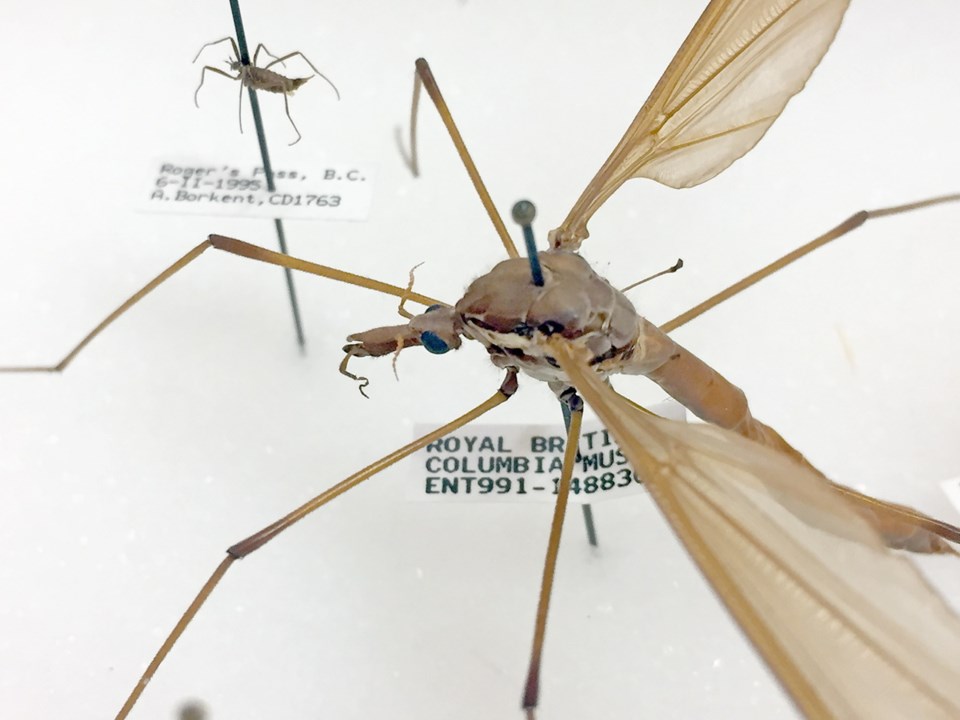When you see this spring’s crop of spindly crane flies flapping erratically through the air or bashing into the walls of your home, stifle your laughter. These hapless creatures are just looking for love and they’re on a tight timeline.
After all, they’ll be dead in a few weeks and this is their one chance to mate.
Some local crane fly species emerged from the ground early this year. Different species show up at different times after spending a year or so as leathery-looking larvae in the soil.
Now that warmer weather has arrived, and people are spending more time outdoors, new spring crane fly populations are noticeable.
“I do think that there are more that hatch this time of year than later,” said Joel Gibson, curator of entomology at the Royal B.C. Museum.
He speculates that last year’s wet spring helped bolster crane fly larvae numbers. Those larvae have become the adults that are now emerging.
You’ll see them outdoors. Like moths, they are attracted to light, so that will draw them indoors if windows or doors are left open.
The adult stage represents the end of their lives. Some live just a week, while other species might last as long as three to four weeks tops, Gibson said.
After mating, females lay eggs in the soil. The larvae might eat grass roots, causing problems for lawns or golf courses.
In some places, crane flies are known as mosquito hawks, “which is interesting because they are not predators,” Gibson said. “They don’t eat other insects. They don’t even really have mouth parts. The adults you see flying around couldn’t bite anything if they tried.”
At most, “they might suck up some nectar or dew or something or a little bit of pollen off of a flower.”
Fans of these creatures marked World Crane Fly Day on May 15.
Canada is home to more than 500 species of crane flies and there are probably at least a few dozen species here in Greater Victoria, Gibson said.
Some are small, about the size of mosquitoes, while others can reach eight to nine centimetres across.
They are among the largest insects in the capital region, he said, adding that if “you are going for some kind of bug Olympics” crane flies’ wingspans will make them contenders.
Gibson describes their clumsy flying style as “comical.”
Their six dangling legs are fragile, making them difficult to work with in a collection.
“The joke is if you look at them, all the legs will fall off.”
That fragility has led to one theory about a survival technique, Gibson said. “They don’t fly fast and they don’t fly well so the only strategy they have is if some bird comes by, maybe it will just grab a leg and it [the fly] can still get away. … It seems like kind of a bad strategy. I don’t know if that actually makes sense.”
Gibson sees beauty in them.
“When you do look at them under the microscope they are beautiful — all these colours and patterns. They can be really pretty … the wings can have really strong patterns and sometimes the bodies will have multi-coloured stripes, or their heads will have stripes down the sides of their face and a long nose on them.”
> Online at the Capital Regional District website: crd.bc.ca/education/natural-gardening/ pure/pests-pesticide-facts/leatherjackets



